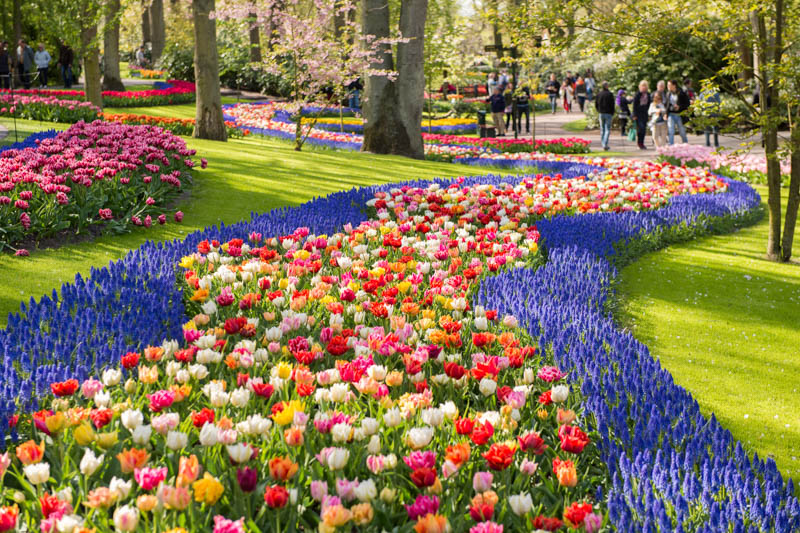A garden is more than just a collection of plants; it’s a living, breathing entity that changes with the seasons, offering a unique tapestry of colors, scents, and textures throughout the year. Each season brings its own set of challenges and rewards, transforming the garden in a beautiful, cyclical dance. Let’s journey through a year in the life of a garden, witnessing the transformation and flowering through the seasons.
Spring: Awakening and Renewal
Spring heralds the beginning of the gardening year, a time of awakening and renewal. After the slumber of winter, the garden slowly comes back to life. Bulbs planted in the autumn burst forth, with daffodils, tulips, and crocuses painting the garden in vibrant hues. The air is filled with the sweet fragrance of blooming fruit trees and the delicate scent of early-flowering witch hazels.
This is a season of preparation and planting. Gardeners are busy clearing away the remnants of winter, pruning shrubs and trees, and planting new seeds and seedlings. The soil, rich and full of nutrients after its winter rest, is ready to nurture new growth. Spring is a time of hope and anticipation, as the garden promises the bounty to come.
Summer: Abundance and Color
Summer is the garden’s most exuberant season, a time of abundance and color. The days are long and warm, perfect for plants to flourish. Roses, hydrangeas, and daylilies bloom in profusion, while vegetable gardens burst with tomatoes, peppers, and cucumbers. The air is heavy with the scent of lavender and honeysuckle, and the buzz of bees and hum of insects fills the air.
This is also a time of maintenance. The garden requires regular watering, weeding, and feeding to keep it thriving in the heat. Evenings are perfect for relaxing among the blooms, enjoying the cool breeze and the sweet perfume of the flowers. Summer’s bounty is a reward for the gardener’s hard work, a testament to the care and dedication that has gone into nurturing the garden.
Autumn: Harvest and Decline
As the days grow shorter and the air cooler, autumn brings a sense of decline, but also of harvest and preparation. The garden begins to wind down, with many plants going to seed and others taking on brilliant autumn colors. It’s a time to harvest the last of the summer vegetables and to enjoy the beauty of fall-blooming asters, chrysanthemums, and ornamental grasses.
Autumn is also a time for planning. Gardeners assess what has worked well and what hasn’t, deciding what to plant for the following year. It’s a season of mulching, planting bulbs, and preparing the soil for its winter rest. As the leaves fall and the garden beds empty, there’s a sense of completion and anticipation for the cycle to begin anew.
Winter: Rest and Reflection
Winter is a season of rest and reflection in the garden. The landscape is stark, with many plants dormant or dying back. Yet, even in this apparent stillness, there is life. Evergreens provide structure and color, while winter-flowering plants like hellebores and snowdrops offer a surprising touch of beauty.
For the gardener, winter is a time to reflect on the past year’s successes and failures, to dream of the garden to come, and to plan for the next cycle of growth. It’s also a time to appreciate the garden in its quiet, contemplative state, to notice the birds and wildlife that find shelter there, and to be grateful for the rest that will rejuvenate the soil and plants.
Conclusion
A year in the life of a garden is a journey through growth, change, and renewal. Each season brings its own beauty and challenges, offering endless opportunities for learning and enjoyment. Whether you’re a seasoned gardener or a curious onlooker, there’s something magical about watching a garden evolve through the seasons, a testament to the interplay of nature, time, and human care.
